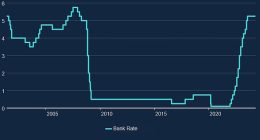
Opinions expressed by Entrepreneur contributors are their own.
When retired Four-Star General Stanley McChrystal was a brand-new lieutenant, he asked his father how to know if someone was going to be a good commander in combat. “Some people keep asking for more information and what they’re trying to do is drive uncertainty to zero, but that’s not achievable. So, they become hesitant. They become tentative, and they become focused on getting more and more information to ratchet the uncertainty out of the situation and they don’t act.”
Introducing change to an organization typically comes with a flood of uncertainty. Leaders try to provide consolation and clarity with all-hands meetings, town halls and committees. However, these traditional approaches often fall short. Employees seek out additional information through formal and informal channels to drive their uncertainty to zero.
Yet uncertainty can’t be completely eliminated. And as leaders, when we attempt to fight uncertainty rather than embrace it, we can exacerbate the anxiety that plagues organizational change.
Related: Why Change Doesn’t Happen, and What to Do About It
People fear change for a variety of reasons, but frequently because they lose control over their role. The larger the change, the more they are going to feel like the change is being done to them. Therefore, anxiety brews when change is being suggested, promoted or enacted. In addition, during any change, information is power and no one likes feeling powerless.
This creates organizational anxiety. Anxiety can take endless forms — worry, fear, panic, stress, tension, frustration, irritability, angst, dread and more. However, leaders shouldn’t focus on pushing back against this anxiety. The true antidote to anxiety is action.
Taking action — even a small, small action — can help employees start to push past stress. Even the most honest, positive and compelling narrative won’t eliminate all employee concerns. It’s important to help empower employees to understand what they control and can’t control during change. How they can participate through action. Here’s three ways you can use action to eliminate change anxiety:
1. Bring employees in on the change earlier in the process
Leaders often believe that it’s their responsibility to design and develop a change plan, such as a new organizational strategy. However, those who are directly impacted by the change aren’t involved in the process until it’s already finalized. Instead of isolating the organization to the change, engage more employees throughout the change process.
This helps in a few key ways. One, it brings new perspectives to the change itself. An employee may bring to light a new idea or approach the leadership team hadn’t considered before. Second, it allows employees more time to understand and digest the change. They can ask questions, and consider how they can embrace it with a level head, rather than it being sprung on them once completed.
Related: How to Lead Your Team Through Change
2. Allow employees to help refine and improve the change
You may have a change ready for delivery to the organization. But, it’s important to provide employees the opportunity to contribute perspectives, and shape ongoing refinement of the change. No plan is perfect. When shared with employees, they will see opportunities and roadblocks that might have been overlooked in development.
Present the change as a direction that is open to improvement. Employees will have a path to not only consider how the change impacts them and their department, but also an opportunity to make it better. Keep in mind that refinement isn’t the path for negativity and fear-mongering. Look for and seek productive, utilitarian and insightful ideas that improve the change outcome.
3. Enable employees to understand and paint the future state
With change comes concern about today. How the change will impact a current workload, scope of role or reporting structure. Yet most change is about a future state — a longer term outcome, such as increasing sales, reducing costs or entering a new market — all of which take time to achieve. By focusing on the big picture outcome, it enables employees to understand the future state and provide both immediate and long-term actions to achieve it.
For example, if the organization is being restructured. Share with employees the future state objective, along with enabling them to contribute ideas to how the restructure can be further optimized to achieve it. By providing them the chance to influence the restructure provides them with a little more skin in the game. It eliminates the perception that it’s happening to them rather than with them.
Instead of fighting organizational anxiety, leaders need to consider how to embrace it. Provide employees paths to action. This empowers them to internalize and engage with the change, rather than having it happen around them — and makes it stick.
Related: 10 Ways Organizations can Work On Change Management!
This article is from Entrepreneur.com








